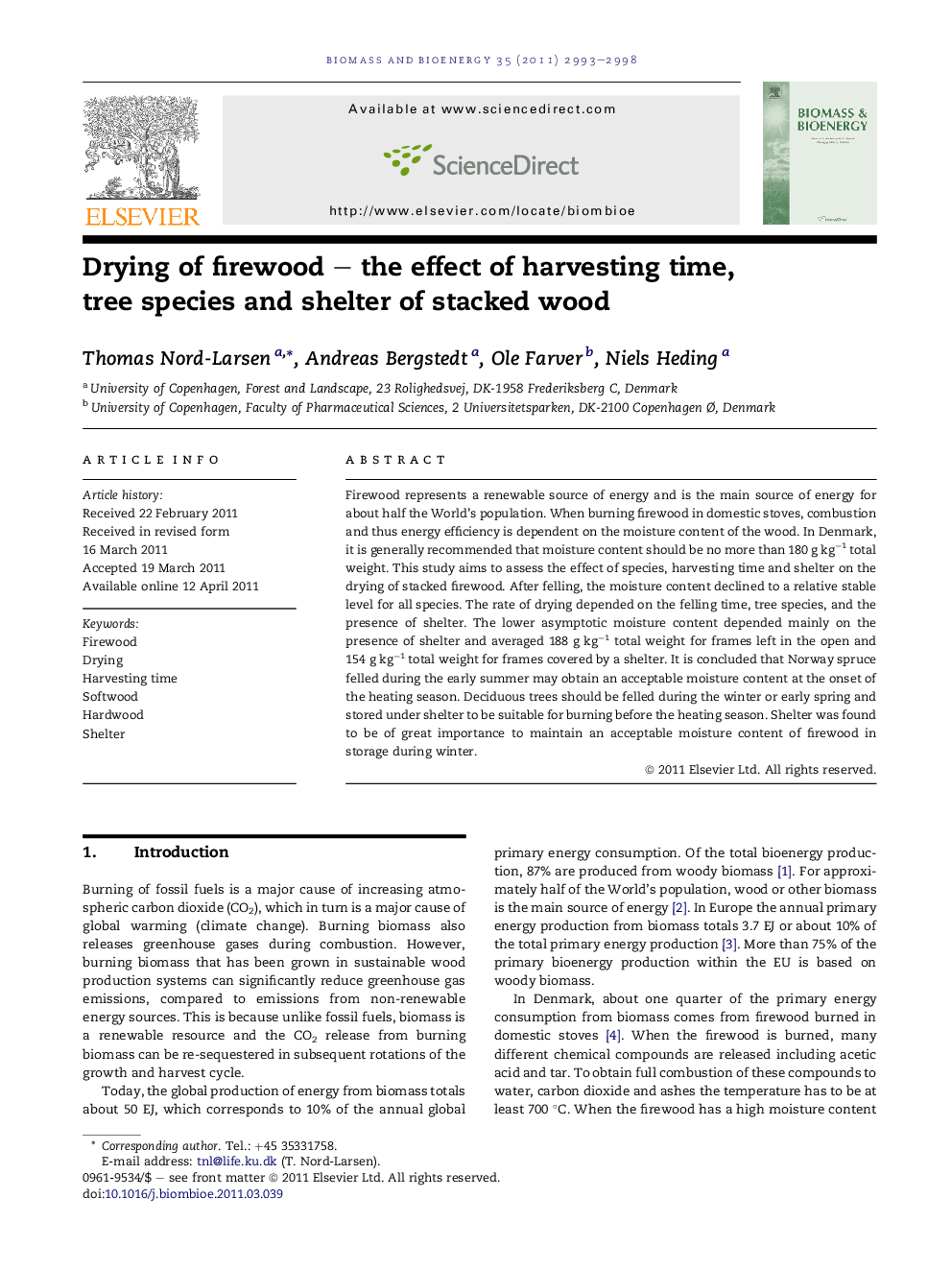| Article ID | Journal | Published Year | Pages | File Type |
|---|---|---|---|---|
| 677885 | Biomass and Bioenergy | 2011 | 6 Pages |
Firewood represents a renewable source of energy and is the main source of energy for about half the World’s population. When burning firewood in domestic stoves, combustion and thus energy efficiency is dependent on the moisture content of the wood. In Denmark, it is generally recommended that moisture content should be no more than 180 g kg−1 total weight. This study aims to assess the effect of species, harvesting time and shelter on the drying of stacked firewood. After felling, the moisture content declined to a relative stable level for all species. The rate of drying depended on the felling time, tree species, and the presence of shelter. The lower asymptotic moisture content depended mainly on the presence of shelter and averaged 188 g kg−1 total weight for frames left in the open and 154 g kg−1 total weight for frames covered by a shelter. It is concluded that Norway spruce felled during the early summer may obtain an acceptable moisture content at the onset of the heating season. Deciduous trees should be felled during the winter or early spring and stored under shelter to be suitable for burning before the heating season. Shelter was found to be of great importance to maintain an acceptable moisture content of firewood in storage during winter.
► Firewood is the main source of energy for about half the World’s population. ► The moisture content of firewood should be no more than 18% of total weight. ► Drying rate depended on the felling time, tree species, and the presence of shelter. ► Lower asymptotic moisture content depended mainly on the presence of a shelter. ► Sheltered storage is very important to maintain an acceptable moisture content of the firewood.
